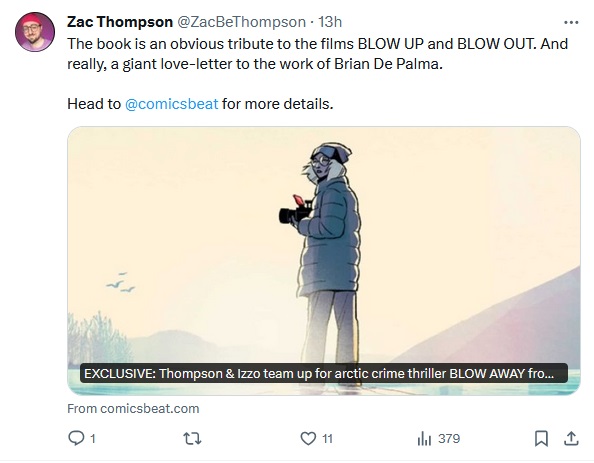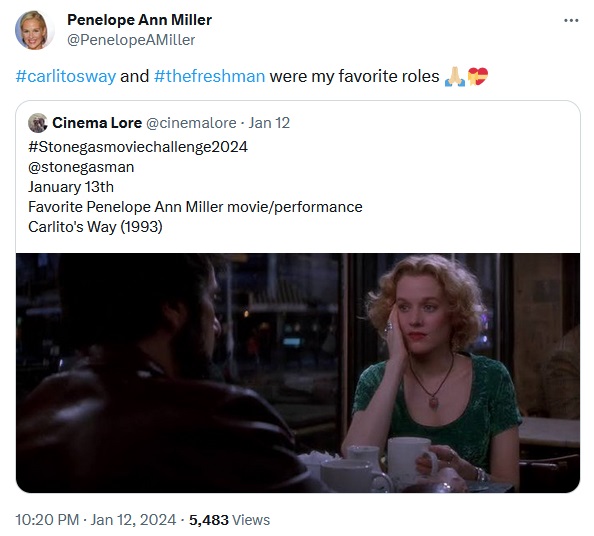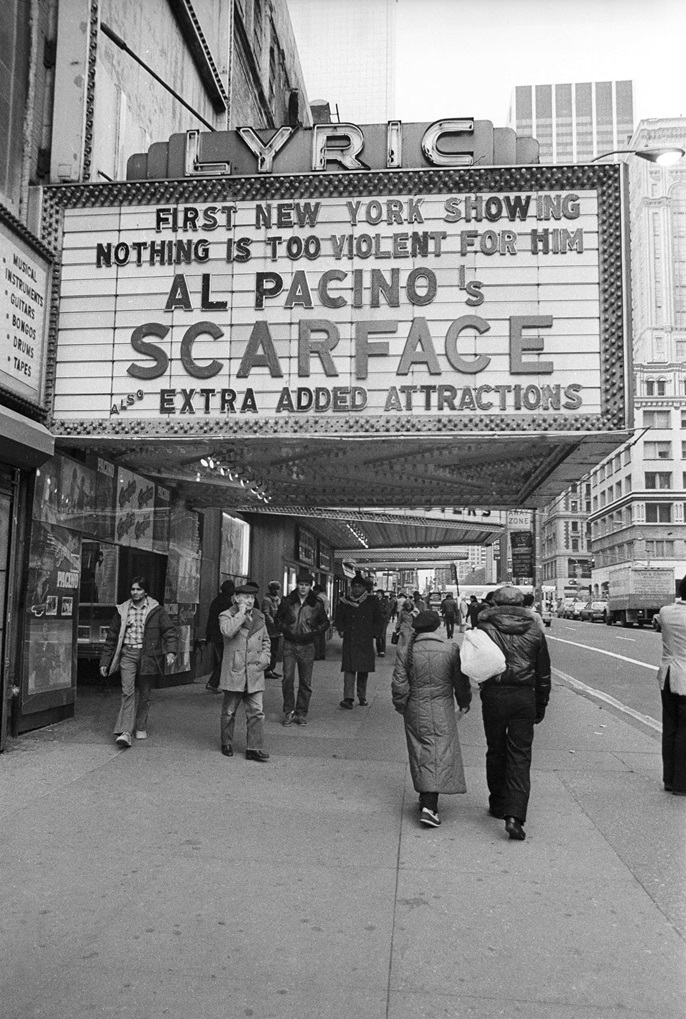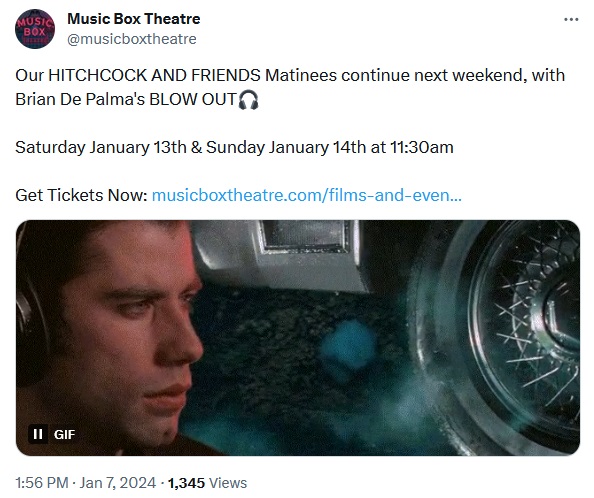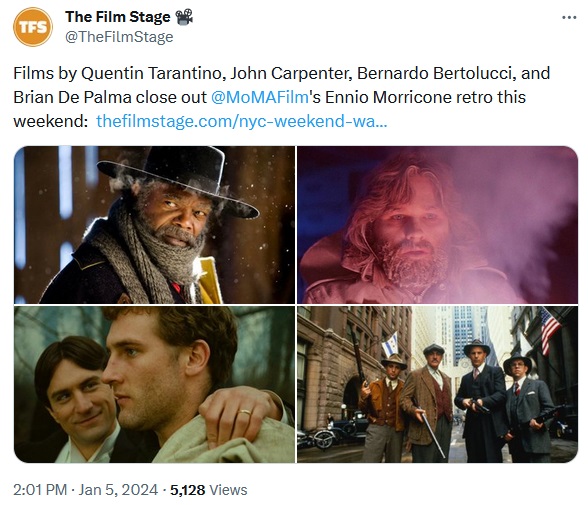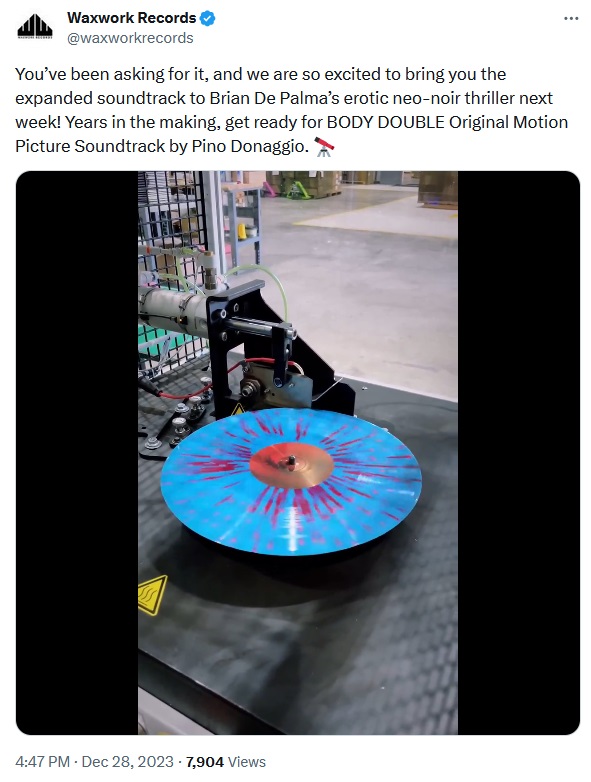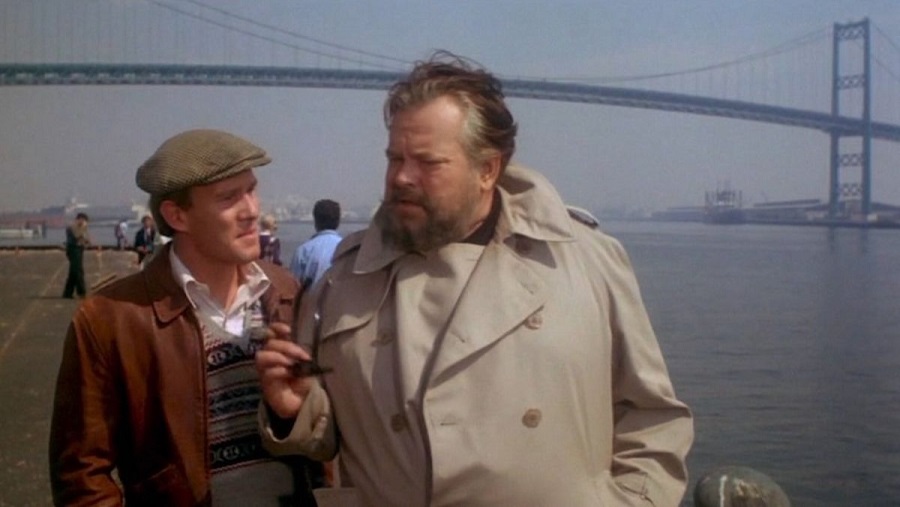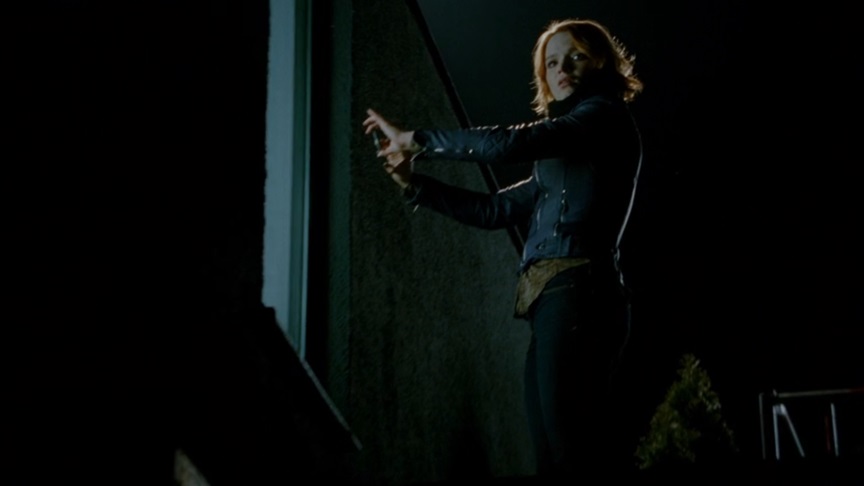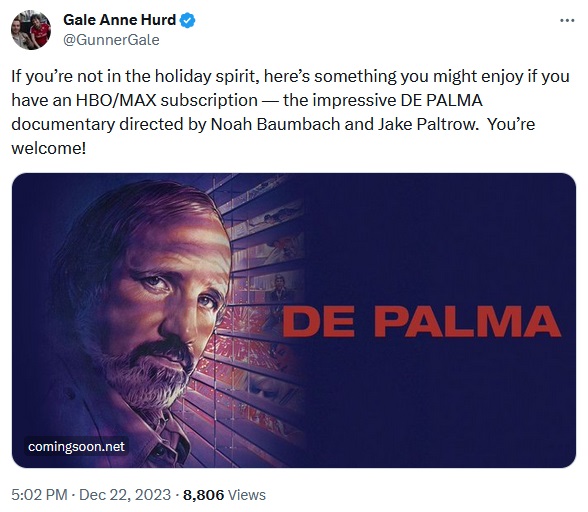Voyeurism and the methods used in recording voyeurism have long been prominent themes in De Palma’s work. Throughout his five-decade filmography, the director has documented the advancements in how technology can be used voyeuristically as film moved to video, and analogue moved to digital. Passion begins with a large close-up of the Apple logo, seen on the back of a MacBook Pro laptop screen, as Christine and Isabelle watch a promotional video clip. Rather than merely being product placement, this detail is used not just to ground the film specifically in the present time but also to anticipate that social media technology in its various forms is going to be an essential thread woven throughout the narrative. Whereas Crime d’amour only vaguely illustrates the business that Christine and Isabelle are working in, Passion brings it to the foreground. The characters now work for an advertising agency and their latest assignment is the marketing of a smartphone. The “Ass Cam” clip that Isabelle creates for this purpose is modelled after a real web video that De Palma discovered during his research for the picture. The original clip was posted online unbranded and was seemingly created for fun by two attractive young women. It was later revealed that they were actually actors and the video is part of a Levi’s jeans marketing campaign. This type of technology later becomes very important in Passion as it is self-servingly employed by several characters to discredit the film’s only sympathetic character, Isabelle. In a series of particularly difficult-to-watch sequences, Christine coaxes her into a breakdown. After discovering that Christine has video footage of her and Dirk having sex, Isabelle leaves her office in a fragile state and crashes her car in the office car park. This incident is the final straw for her and she collapses weeping and screaming. This intensely private moment is captured on security camera and Christine plays the footage at a crowded work gathering. While Isabelle tries to hold onto her dignity, Christine mockingly says: “This really hurt you, didn’t it? I’m so sorry, I just thought we could laugh together“.
Further into the story, Isabelle discovers that her assistant Dani followed her movements on the night of the murder and captured everything on her video phone. In due course, the clearly unhinged Dani intimidates Isabelle into a sexual relationship in return for keeping the footage from the police. By being abused, humiliated, manipulated and blackmailed with technology that is readily available to anyone, Isabelle is a thoroughly modern film noir heroine for the 21st century.
Since Passion centres on rivalry within an enclosed business world milieu, De Palma forgoes the more elaborate camera movements and spacious use of exteriors often associated with his work to focus on the restricted interior spaces that the characters inhabit. Most of the drama unfolds within the confines of the workplaces, living quarters and social events that Christine and Isabelle frequent. To reflect these stylish environments, the cinematography of José Luis Alcaine is crisp in texture and muted in its carefully selected colour scheme. Replete with glass and reflective surfaces, the imagery possesses a steely quality that many reviewers have mistaken for HD, but it was in fact shot on 35mm. This coldness is further enhanced by blue being the predominant colour, creating a deceptive feeling of calm and order beneath the shiny veneer. Reds are sparsely used but dazzlingly intense and aggressive when they erupt as ruby lipstick or stylish designer stilettos, all signifiers of antagonism in workplace warfare. With this aesthetic and De Palma’s rigid precision of blocking, the framing feels clinical and ultimately imbues this cutthroat domain with claustrophobia.
De Palma has a masterful ability to fill a frame with multiple visual elements, yet he can still balance conveying essential narrative information with details that enrich the film as a whole. His use of the split diopter lens, which allows for the image to display separate depths of field in one shot, is relatively restrained in Passion yet is subtly effective in what it achieves. In one sequence there are three points of focus in a single shot. Dirk lies in bed smoking a cigarette. He is framed in the foreground on the left hand side. In the background, Isabelle stands in the bathroom with her back to the camera. Isabelle’s face is reflected in a large mirror, while other ornamental objects are either situated on the bathroom counter or seen as reflections in the mirror from the other side of the room. In the dialogue exchange between the two characters, Isabelle learns more about Dirk’s relationship with Christine, and discovers Christine’s adventurous sex life which includes a variety of sex aids including a strap-on and a Venetian carnival mask modelled on her own features. This sequence runs a little over two minutes, but within this limited amount of time De Palma conveys the interior design of Dirk’s home which reflects aspects of his personality (an ornament shaped like a penis, a sculpture of an obedient dog), Dirk’s contemptuous attitude towards Christine (“Whatever Christine wants, she gets“), Isabelle’s inquisitive nature (“What’s it like with her?” she asks before rooting through a drawer full of sex aids), and the toys that Christine uses with Dirk that reflect dominance (the strap-on) and narcissism (the mask).
While the split field diopter is an understated way of including an array of elements within a single image, split screen is a more obviously overloaded technique since it simultaneously presents two frames side-by-side. In Passion there is a seven-minute split screen sequence. The left of the screen depicts Isabelle attending a performance of The Afternoon of a Faun, capturing both her eyes watching this ballet and what is taking place onstage. Throughout the music from the ballet, Prélude à L’après-Midi d’un Faune by Claude Debussy, plays while a male dancer (Ibrahim Öykü Önal) and a female dancer (Polina Semionova) perform on the stage. The set dressing is stark and minimalistic, and both dancers play to the camera throughout, constantly meeting its gaze (and therefore, that of the viewer). De Palma covers most of this performance in wide-shot, but occasionally cuts or zooms into the action for tighter frames. This changing of image size often relates to not just the context of the ballet, but also what is taking place on the right of the screen: the build-up to and eventual murder of Christine. It begins with Dirk drunkenly trying to talk to Christine as dinner guests are leaving her home. She escorts him from the house and comes back to find a note on the door stating ‘Leave the door unlocked, undress, shower, blindfold yourself and come to bed‘. While Dirk attempts to drive his car (but crashes it) and Christine prepares for her mystery guest, a figure (whose point of view is adopted by the camera) enters her home, moves up the staircase, sees Christine checking her appearance in a mirror, then hides behind a door which is ajar. Through it Christine can be seen putting on the blindfold and making her way down the hallway towards the figure. The door opens and Christine is gently shoved up against the wall. A gloved hand pulls away her blindfold and she looks directly into the camera – at her murderer’s face. The split screen display disappears as the film cuts to a shot depicting what Christine sees – her own Venetian mask as worn by this figure. Cutting back to her reaction, Christine’s look of surprise turns to fear as the figure’s other hand produces a knife and slashes her throat. The blood splatters into the camera frame, and the scene ends with a shot of the white mask sprayed with blood.
In displaying two simultaneous passages of action, De Palma allows for a sequence that works purely on an visceral level. A familiarity with Jerome Robbins’ The Afternoon of a Faun ballet is not necessary since the precise editing, audio shifts and changing camera frames achieve a disorientating, yet never confusing, juxtaposition of visual and audible activity. The final split screen moment when the female dancer and Christine are each framed attractively in portrait is unnerving. That both are looking into the camera (therefore making direct eye contact with the viewer), one in the midst of performing a beautiful ballet piece and the other about to face her death, is disarmingly effective. This moment of calm is shattered by the passage from the split screen to a close-up of the Venetian carnival mask, and the Debussy music is abruptly cut short with a sharp sting from Pino Donaggio’s dramatic score.
While the treatment of the material may differ between Crime d’amour and Passion, the first half of both films follow essentially the same storyline before going off in different directions. In Corneau’s film, Isabelle is seen meticulously planning the murder of Christine, planting evidence that initially makes her a suspect but later exonerates her, and ultimately frames Philippe (the original ‘Dirk’ character). Corneau’s picture maintains its poise as a refined chamber piece to the end.
In De Palma’s version of events, Isabelle carries out the crime in the same scheming manner. But Passion withholds the identity of the killer until its final scenes, significantly altering the emphasis of the narrative. To achieve this shift, the director reflects the seemingly fragile emotional state of Isabelle (betrayed, abused, heavily medicated) in the increasingly expressionistic form of the film. Sequences begin to play out as groggy dreams within dreams, or as exaggerated recollections of events experienced but now played out in a nightmarish world of tilted Dutch angles and exaggerated faux-noir shadows. As it is ultimately revealed that Isabelle is not innocent and the whole ‘wrong man’ section was, in fact, deceiving the audience, De Palma transforms the material into a meditation on guilt, and the dream logic becomes even more delirious, replete with doppelgängers, browbeaten detectives and vengeful siblings.
. Also, visit the

